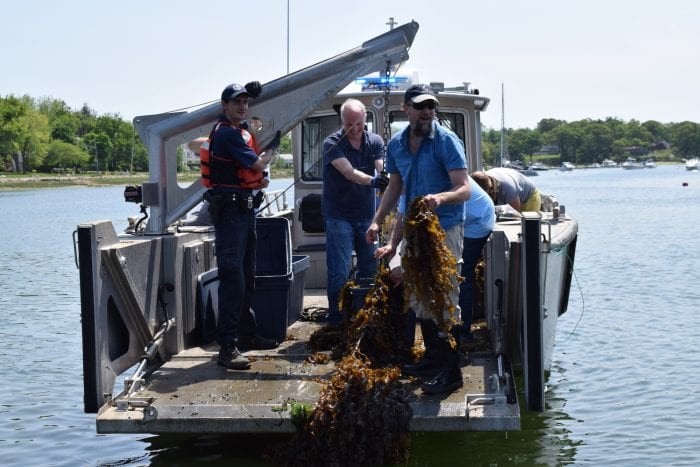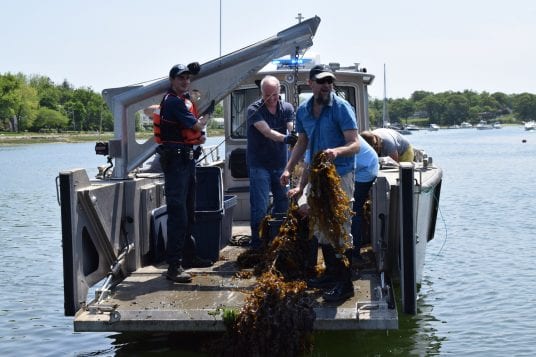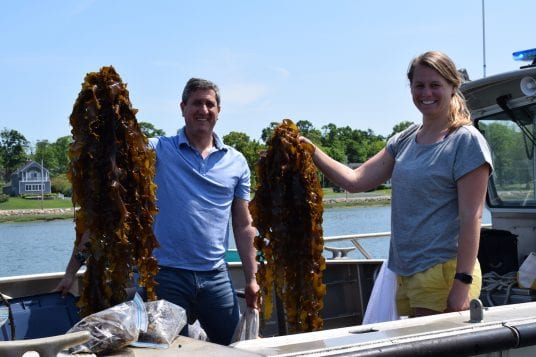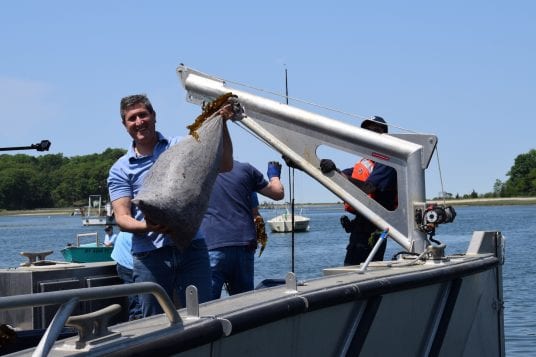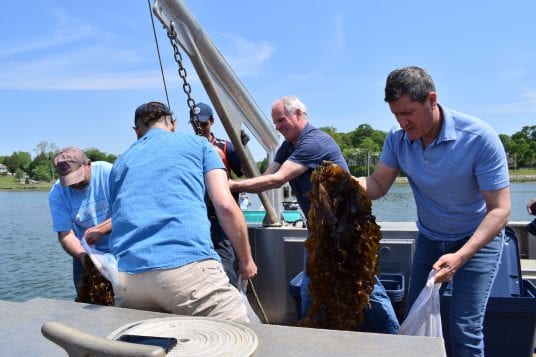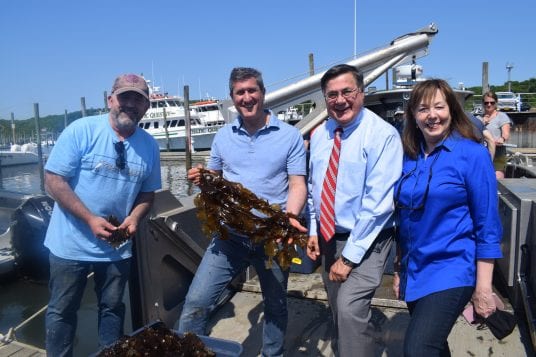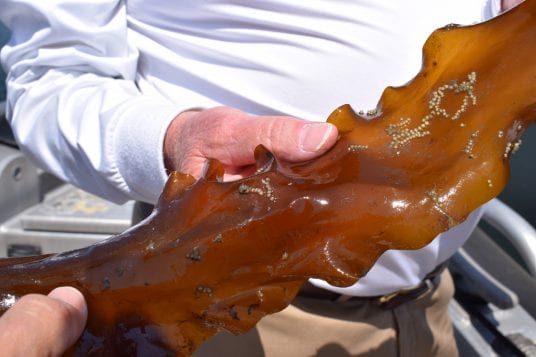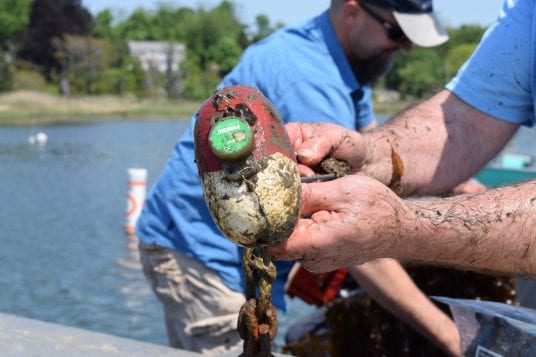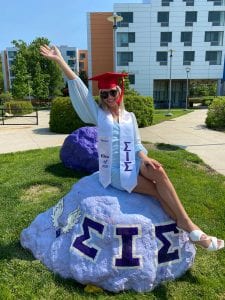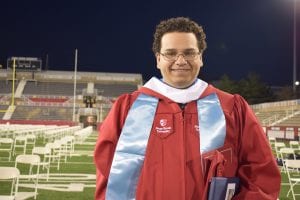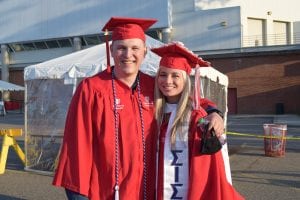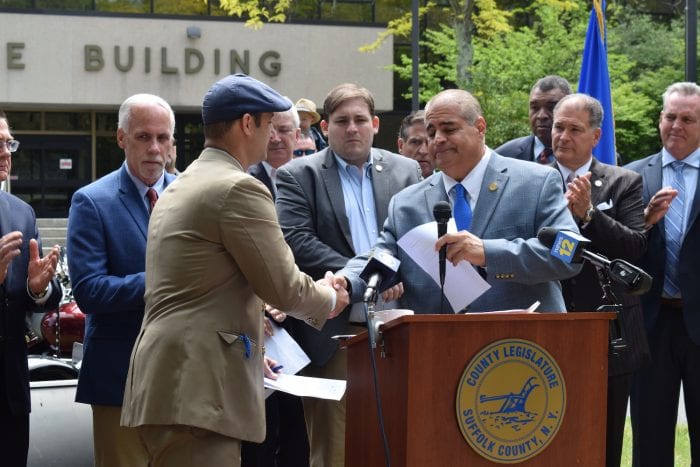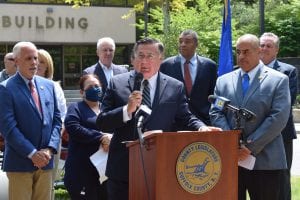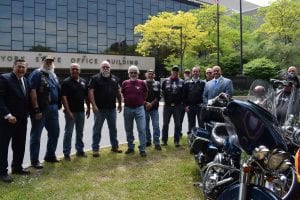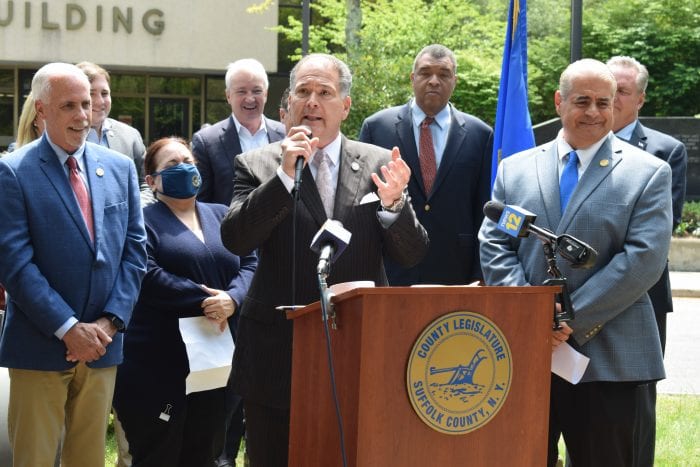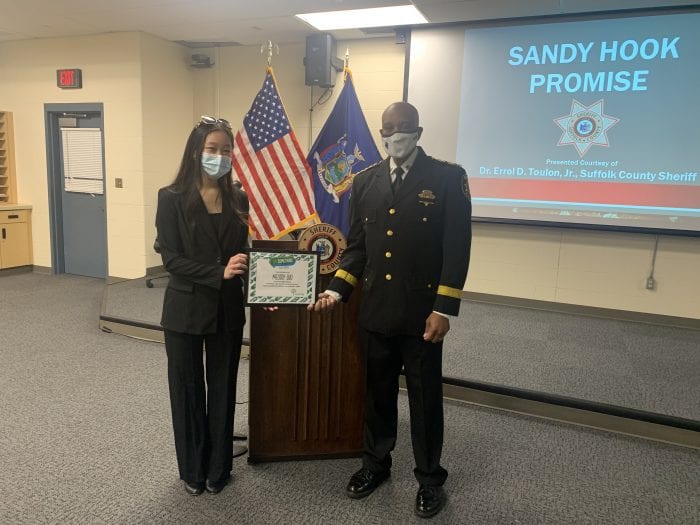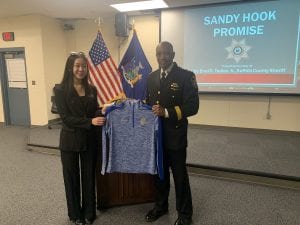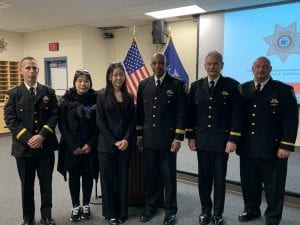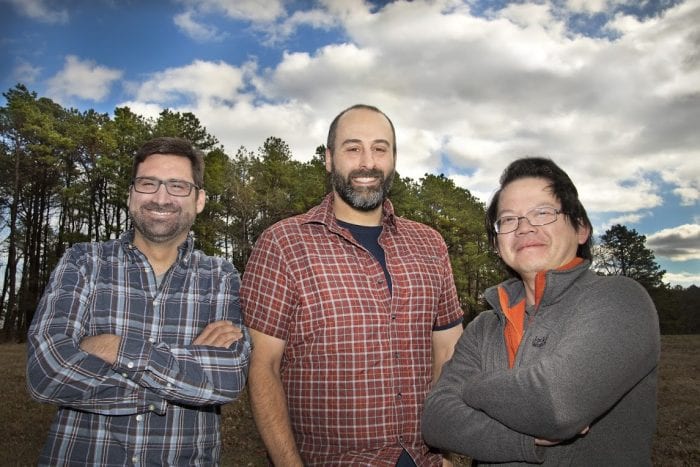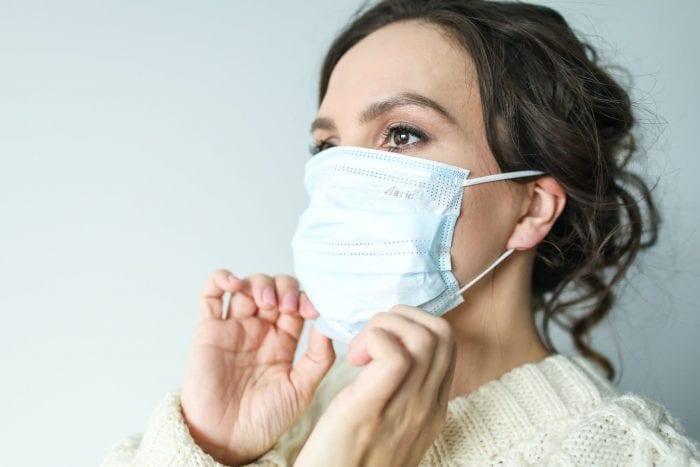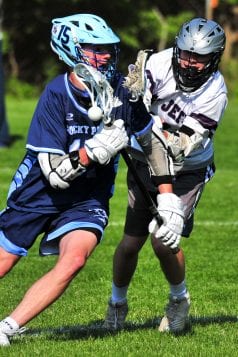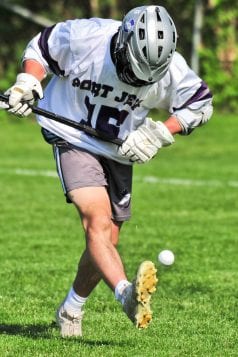Members from the Town of Brookhaven, the Setauket Harbor Task Force and other environmental groups headed out on two boats last week to harvest a potentially new aquatic crop — sugar kelp.
On Thursday, May 20, after a several-months-long process of preparing, planting and harvesting, volunteers joined Brookhaven bay constables out of Port Jefferson Harbor to head slightly west in retrieving the brown native seaweed that was brought to two labs for study.
The project was spearheaded by nonprofit The Moore Family Charitable Foundation — a community involvement group that helps with projects throughout Long Island and the five boroughs.
“Our main goal for this year is to spread the word about kelp and where it grows, the conditions it needs, how to process it and how it can benefit growers on Long Island,” Wendy Moore, benefactor and manager of the sugar kelp project, previously told TBR News Media.
According to the foundation’s lead scientist David Berg, sugar kelp is known to be edible for both people and pets, it can be used as a fertilizer, bioplastic, biofuel, cosmetics and is a method to help improve water quality.
Collaborating with the Town of Brookhaven, the Setauket Harbor Task Force, the School of Marine and Atmospheric Sciences at Stony Brook University and Cornell Cooperative Extension, it took a large group of different people to implement a crop that could become a big deal on Long Island.
Town Supervisor Ed Romaine (R) said that when he became supervisor, he immediately knew he wanted to lease out the town’s bays and harbors for projects like this.
“Not only clams and oysters, but also for things like kelp, which is tremendous,” he said. “And seaweed. I think that we can start an industry and stimulate it to become a major industry.”
In December, the task force dropped mooring anchors and set up the kelp growing field’s area in Setauket Harbor. In January, members attached the kelp seedlings to a line just under the surface of the water between buoys there.
George Hoffman, a trustee of the task force which helped oversee the sugar kelp cultivation and production, said partnerships like this are critical to get stuff done.
“We’re really thankful to the partnership,” he said. “Between the town and the harbor group, we wouldn’t be able to do what we’re doing if we didn’t have that partnership. It’s just a great example of how government works with citizens groups.”
Nestled in the water between Port Jefferson and Setauket, more than 200 pounds worth of sugar kelp was retrieved.
Along with being a sustainable crop, sugar kelp helps take in excess nitrogen and CO2 from harbor waters, improving its chemistry. Hoffman said that excess nitrogen causes harmful algae bloom and excess CO2, resulting in ocean acidification.
“Removing nitrogen and CO2 from the waterways is absolutely critical,” Romaine added. “So, [sugar kelp] shows a lot of promise — and if you worry about methane gas, cows eat this when they feed and have 80% less gas.”
Town Councilman Jonathan Kornreich (D-Stony Brook) joined on the boat, lifting up bags of kelp to weigh. He said that projects like this not only help the environment, but can also make positive changes in the private sector in the future.
“To me this is the way that government should operate,” he said. “We make investments like this, into scientific research, or ways to develop either materials, or crops or techniques that can have a positive impact on things.”
Eventually, he said, a private sector can take over and make a business out of the crop.
“Government has a role in helping to get that started and making those investments in science,” he said.
Romaine said that Brookhaven has the largest waterfront of any town on the Island. In Port Jefferson, the area surrounding the harbor where the kelp was harvested goes back to the village’s original roots.
“We’re looking around and asking, ‘What could be the new industry for our town? What could give it life? What could be productive? How could we help nature to save clams, oysters, seaweed, kelp?’” he said. “Those industries are the future that we have to be visionary enough to support and to put the muscle of town government behind it.”

